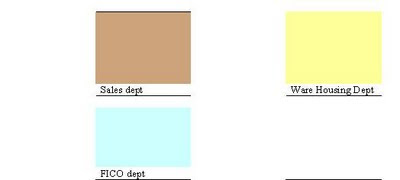INTRODUCTION TO SAP AND ABAP/4 LANGUAGE
ABAP/4 editor (Focus on the
functionalities of new ABAP editor)
· Data types
· Output statements
· Writing small programs
· Arithmetic operations
· String operations
· Control statements
· Parameters
· Simple reporting
· Selection screens
· Transaction code creation
o Domain
o Structures
o
o Type Groups
o Primary and foreign keys.
REPORTING
· Debugging techniques.
o Breakpoint creation.
o Watch point creation.
o Emphasize on the usage of New
Debugger.
· Internal tables.
o Declaration
o Processing.
o Population.
· Control Break Statements.
· Modularization techniques.
o Includes.
o Subroutines.
o Function modules.
o Macros
· Variants.
· Conversion exits.
· Message class creation &
message types and handling messages.
· Events for classical reports.
· Events for interactive
reports.
· Hide and hotspot.
· Creating and handling
buttons.
· Menu painter.
ABAP OOPS
· Fundamentals of OOPS.
· Introduction to Local classes
and methods
· Importance of Public, Private
and Protected sections.
· Simple reporting using local
classes and methods.
· Global classes and
interfaces.
· Usage of global classes in
the reports.
ALV
· Introduction.
· Types of ALV
· Simple report to display
simple ALV List using Function Modules
· Simple report to display
simple ALV grid using Function Modules.
· Interactive ALV Reports.
· Adding new buttons in the ALV
toolbar and handling events.
· Working with ALV using
classes (List, Grid and Tree).
· Usage of latest class library
in ECC 6.0 for ALV.
DIALOG PROGRAMMING
· Introduction to screen
painter and dialog programming.
· Flow logic.
o PAI.
o PBO.
o POV.
o POH.
· Screen designing.
· Programming in object
browser.
· Field validations.
· Creation of
o Normal Screens
o Sub Screens.
o Table Controls.
o Tab Strips.
· Dynamic Screen.
o Call Screen.
o Set Screen.
o Leave to Screen.
o Leave Screen.
· Processing of list from
transaction and vice versa.
· Screen table and its fields.
· Lock objects.
INTERFACE PROGRAMMING
· Why Data Transfers
· Introduction to BDC.
· File Handling.
o Presentation server.
o Application server.
· Recordings.
· Methods in BDC.
o Call transaction.
o Session method.
· Error Handling in Call
Transaction.
· Handling Table Controls in
BDC and Screen Resolutions.
· Mass Updation.
o Vendor master.
o Customer master.
· Legacy System Migration
Workbench (LSMW)
o Different methods.
o Steps to Create an LSMW
Project.
o Uploading data.
SAP Scripts
· Introduction.
· Layout Sets.
· SAP Script Elements.
· Modifying standard layout
sets (by using subroutines).
· Uploading logo.
SMARTFORMS
· Working with smart forms.
· Standard Texts.
· Graphics management.
· Writing print program and
designing layouts.
· Output type configuration to
standard orders.
ADOBE FORMS / INTERACTIVE FORMS
(PDF)
· Introduction
· Overview on Form Interface
and Layout sets
MISCELLANEOUS TOPICS
· SAP System Landscape.
· Correction and Transport
System (CTS).
· Transport Organizer.
· Workbench Request.
· Task Creation.
· Merging Requests
· Release Requests.
· SAP memory.
o SET/GET parameters.
· ABAP memory.
o Imports/ Exports.
· Logical Database and Handling
Events (LDB).
· Field symbols.
· MM flow.
· Introduction to CA.
· RFC destination.
· Working with RFC function
modules.
IDOCS
· Concepts of IDOCS.
· Structure of IDOCS and Types.
· Creation of segments
· Creation of IDOCS.
o Basic.
o Extension.
· Creation of message types.
· Monitoring tools of IDOC
interface.
o Statistics.
o Display IDOCS.
o IDOCS list.
ALE
· Defining logical systems used
for ALE interfaces.
· Outbound / Inbound
processing.
· Transferring of master data
from one system to another system.
· Distribution modal view.
o IDOC filtering.
o Segment filtering using
filter objects.
o Reduced IDOC.
· Outbound using change
pointers methods.
EDI
· Overview and architecture.
BAPI and Business Objects
· Introduction to BAPI
· Overview of Business Objects.
· Step By Step Approach
followed to create BAPI.
ENHANCEMENTS
· Introduction to enhancements.
· Different Ways of doing
Enhancements.
· Types of User Exits.
o Field Exits
o Menu Exit
o Function Exit.
o Screen Exit















